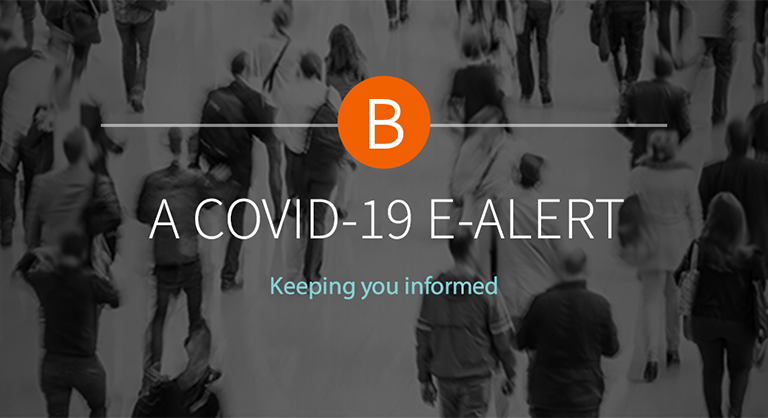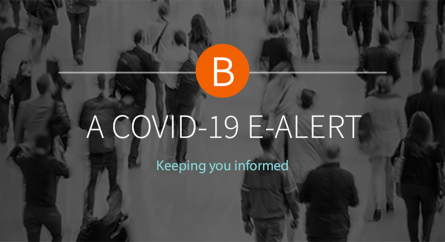CARES Act – Small Business Administration’s Payroll Protection Loan Program Explained
The CARES Act’s economic stimulus package expands eligibility and other terms of lending programs administered by the Small Business Administration (“SBA”). The “Payroll Protection” loan program provides qualified small businesses and non-profits with favorable loan terms to cover employee salaries, payroll support (including paid sick or medical leave), mortgage, rent and utility payments, insurance premiums, and other debt obligations. Importantly, a prospective borrower is still eligible to apply for a Payroll Protection loan even if it has laid off employees or shut down operations.
We recommend that any business or non-profit considering a loan under the CARES Act first review the primary features of the loan program, then drill down to further examine (1) whether it will in fact qualify as an eligible small business or non-profit and (2) the maximum loan amount available for borrowing.
General Features of the Payroll Protection Loan Program
Eligibility
The CARES Act program covers small business concerns and Section 501(c)(3) non-profit organizations with 500 or fewer employees (unless the covered industry’s SBA size standard allows more than 500 employees). For purposes of determining the number of employees, the term employee includes individuals employed on a full-time, part-time, or other basis. There are certain exceptions to the 500-employee threshold that are discussed below.
Maximum Amount of Loan
The CARES Act increases the maximum loan amount to the lesser of $10 million, or 2.5 times the average monthly total payments for “payroll costs” (as defined in the Act) during the trailing 12 months. A business or non-profit considering whether this loan program is a good fit should first determine the maximum loan amount available by calculating its average monthly payroll costs, as outlined in more detail below.
Use of Loan Proceeds and Covered Period
The Payroll Protection program covers the period beginning on February 15, 2020 and ending on June 30, 2020 (the “covered period”). Loan proceeds may be used only for employee salaries, wages, tips and commissions, payroll support (including paid sick, medical or family leave), group health care premiums, state tax payments on compensation, mortgage interest payments (but not any payment or prepayment of principal on a mortgage obligation), rent and utility payments and insurance premiums paid during the covered period, and interest paid during the covered period on debt obligations incurred before the covered period.
Fundamental Loan Terms
- Maximum term of loan is 10 years.
- Interest rate cannot exceed 4%, with interest payments completely deferred for 1 year.
- No prepayment penalty.
- Eligible borrowers must have been in business on February 15, 2020.
- No pledge of collateral or personal guarantee is required.
- There is no requirement that the applicant is unable to obtain credit elsewhere.
- Applicants must certify that the loan is necessary due to the economic conditions caused by COVID-19; that funds will be used for a permitted purpose; and that they are not receiving funds from another SBA program for the same uses.
- No recourse against any individual, member, shareholder, or partner of a loan recipient for non-payment, unless the loan proceeds are used for unauthorized purposes.
Loan Forgiveness (and Potential Reduction in the Forgiveness Amount)
During the 8-week period beginning on the date a Payroll Protection Loan is funded (the “forgiveness period”), a borrower will be eligible for forgiveness and cancellation of indebtedness for up to the full principal amount of such loan. The amount eligible for forgiveness is equal to the total costs incurred and payments made during the forgiveness period for (1) payroll, (2) mortgage interest, (3) rent and (4) utilities.
The loan forgiveness amount available to a borrower is subject to reduction if the borrower terminates employees or reduces employee salary and wages during the forgiveness period. There is, however, relief from the forgiveness reduction if the borrower rehires employees or makes up for wage reductions by June 30, 2020.
Special Considerations
- Is your Business or Non-Profit Eligible?
For many businesses and non-profits, determining eligibility for a Payroll Protection Loan under the CARES Act will be a straightforward exercise. Generally, any business or non-profit with 500 or fewer employees will be eligible. However, depending on the industry in which a business operates, or its corporate structure, the CARES Act provides important exceptions that may apply to make your business eligible under this loan program.
If your business does not fall within the 500-employee threshold for eligibility, there may be an exception that would allow you to take advantage of the loan program.
Scenario A: You have a hotel or restaurant business with multiple locations, none of which alone has more than 500 employees, but in the aggregate exceed well over 500.
Under the Cares Act, businesses in certain industries, including hospitality and restaurant businesses, franchises, and recipients of Small Business Investment Company (SBIC) investment, are tested based on the number of employees per location. These Accommodation and Food Sector businesses (with NACIS code beginning with 72) will meet eligibility requirements if they have multiple physical business locations, if no single location has more than 500 employees. Thus, hospitality and restaurant businesses with multiple business locations and more than 500 employees in the aggregate but no more than 500 per location, may still be eligible to receive a covered loan.
Scenario B: How does the size eligibility requirement apply to a group of affiliated parent and subsidiary corporate entities, which, in the aggregate, employ over 500 employees. Does this make each separate entity ineligible for a Payroll Protection loan?
The CARES Act contains a provision that allows for each of the parent and subsidiary entities to be considered separately for purposes of meeting the 500-employee threshold. Under ordinary SBA standards, the so-called “affiliate rule” counts the employees of all corporate affiliates (generally defined to mean 50% ownership or contractual control). The CARES Act waives the SBA’s affiliation rules to allow for the number of employees of each entity to count separately, thereby allowing subsidiary or portfolio companies to satisfy the 500-employee size requirement.
- Must Compensation of Certain High Earners Be Excluded When Calculating the Maximum Loan Amount?
The short answer is yes, but some explanation is helpful. Before committing to and applying for a Payroll Protection loan under the CARES Act, we recommend that businesses and non-profits analyze and calculate the maximum loan amount available. Under the Act, the maximum loan amount is the lesser of $10 million and 2.5 times the average monthly total payments for “payroll costs” during the 1-year period from the date of the loan. Importantly, the maximum loan amount is tied to an applicant’s payroll costs only, not the other costs the loan proceeds may cover.
The Act broadly defines “payroll costs,” to include any compensation:
- that is a salary, wage, commission, or similar compensation;
- payment of cash tip or equivalent;
- payment for vacation, parental, family, medical, or sick leave;
- allowance for dismissal or separation;
- payment required for the provisions of group health care benefits, including insurance premiums;
- payment of any retirement benefit;
- payment of State or local tax assessed on the compensation of employees; and
- the sum of payments of any compensation to or income of a sole proprietor or independent contractor in an amount that is not more than $100,000 in 1 year, as prorated for the covered period.
Importantly, the Act excepts from the calculation of average monthly payroll costs the compensation of “high earners,” such that the compensation of an individual employee in excess of an annual salary of $100,000, as prorated for the covered period, shall not be included.
This does not mean that a business or non-profit would not include the compensation of any employee with an annual salary greater than $100,000. Rather, the amount that can be included in the calculation for employees making over $100,000 annually must be prorated for the covered period (defined under the Act to mean February 15 – June 30, 2020, i.e., 4.5 months). Thus, when making the calculation, the employer should include the compensation of only those employees whose salaries do not exceed $100,000 when prorated over 7.5 months of the previous year.
Participating Lenders
Lenders who are already authorized to make loans under the SBA’s existing Section 7(a) loan program are automatically eligible to make Payroll Protection loans. The SBA and the Treasury Secretary will extend eligibility to additional qualified lenders that do not currently participate in such program. Participating lenders will be permitted to determine borrower eligibility under the Payroll Protection loan program and will be entitled to make and approve Payroll Protection loans without SBA review. Participating lenders will underwrite loans not based on borrower repayment ability, but rather whether the borrower was in operation on February 15, 2020, with one or more employees or independent contractors.
Click here to review the Paycheck Protection Program application.
In summary, the Payroll Protection loan program appears to be a useful tool that small businesses and nonprofits should consider among other options as they weather the economic impact of the pandemic. Each organization should review the features of the loan program, evaluate eligibility and calculate the maximum loan amount. If you need assistance with this process please contact the alert authors, Rory Fazendeiro and George Tetler, or your attorney at Bowditch.
Categorized: COVID-19 Resources
Tagged In: CARES Act, coronavirus, COVID-19, payroll protection loan, small business administration






